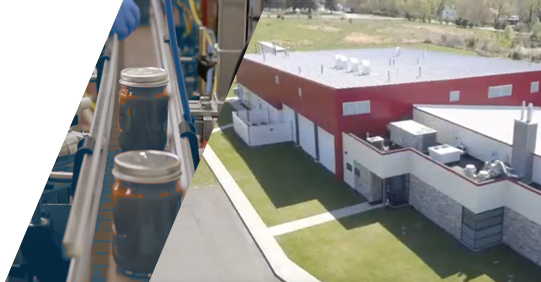What are Relays?
 Relays are the control switches that operate with low-powered electrical signals controlling most types of circuits. An example of an ideal relay application is having one electrical signal setup to control several circuits, allowing complete isolation of electricity between the controller and the controlled circuits.
Relays are the control switches that operate with low-powered electrical signals controlling most types of circuits. An example of an ideal relay application is having one electrical signal setup to control several circuits, allowing complete isolation of electricity between the controller and the controlled circuits. Think of these signals in relation to a “relay race” in sporting events, where the race is made up of sequential parts, and each team member passes from one to the next team member, or with microwave or broadcast transmitter relays, they repeat or reproduce transponder signals forward from another source.
These relay applications above can help with understanding different processes of relays using electromagnetic control switches and operators, or solid state relay controllers. Somewhere between 1831 and 1840, several inventors were experiencing breakthroughs with their relay experiments and perfecting their relay mechanisms for the electrical telegraph intended to digitally amplify repeated signals for furthering the range of previous telegraph transmission schemes.
Basic Relay Designs
In some cases, multiple types of relays might be appropriate for your specific application. Understanding the various form factors, technologies, and styles of relays are essential for picking the best-suited relay for your particular job requirement. Some applications depend on certain strengths of a relay application and many relays have limitations not appropriate for all types of switches or controllers, V=IR.

Mechanical Relays

A relay acts as an insulator that protects the device being used. When the control (input end), or the load (output end), are not electrically connected, the relay prevents any power surge damages to your application.
Using a system with large quantities of mechanical relays makes it possible to safely switch multiple devices on and off sequentially, in a particular order, or by using an automated set of timers.
A common example of using multiple mechanical relays is for controllers that trigger a Cybernetic Fountain display, timed to coordinate with laser lights, water displays and music. An example of one of these systems is Nam Van Lake Cybernetic Fountain show, which features 288 spotlights and 86 spouts, set-up as a precisely choreographed fountain show. Music accompanies the show and a bit of laser action. Relays associated with electrical circuitry include heating and air conditioning controls, refrigeration, and washing machinery. The input may be electrical with output directly mechanical or the reverse set-up is often used.
Other types of relays include hydraulic or pneumatic relays. All types of relays contain sensing units within an electric coil that are on/off powered by AC or DC current.
Solid State Relays


The advantage to using solid state relays is that they protect circuits from electrical noise. SSR’s have no contact bounce, they have low EMI/RFI, and compared to mechanical relays, they have a longer life due to no moving parts. A solid state relay can handle only single pole switching, however.
Pulsed output is a form of maintaining a contact position indefinitely without any power needed to be applied to the coil. Found in latching relays, stay, keep, or impulse relays, the advantage to a pulsed output is that one coil will consume power for just the instant when a relay is switched. This form of pulse relay contact can retain an on/off setting across a power outage. Using a remote control for building light systems with pulsed output has none of the characteristic humming produced when an AC energized coil is continuously on.
For an example, two opposing coils fabricated with a permanent magnet or an over-center spring holds the contacts in position after the coil is de-energized. Using a pulse to one coil switches the relay on, pulsing the opposite coil switches the relay off. These relay forms are found in numerous industrial applications such as in the Avionics industry, where controls of simple switches and single-ended outputs are required for high tech control systems. When relays require a remnant core, to maintain contact in the operation position, a current pulse of opposite polarity is required to release the contacts.
The formula will be I=P/V. For example, let's assume we have a 15,000 W heater, and that we are powering it up with 120V to heat an aluminum sheet. The current will be 10,000/120= 80 A. As the example controller is using a DC pulse signal, we will need relay SSRL660DC100, which is rated for 100 A. Example: SRFG-624/10-P + CN32PT-440 + SSRL240DC25.
High-reliability, Vdc Input/Vac output, or Vac Input/Vac output with thermal conductive pad, SSRL240 and SSRL660 series. Use the SSRL series for controlling large resistance heaters together with temperature controllers. Three-phase loads can be controlled with two or three SSR’s.
Introducing the New PlatinumTM Series Low-Cost Temperature and Process Controllers

Analog output is fully scalable and can be configured as either a proportional controller or as a retransmission to follow your display. Includes universal inputs for thermocouple, thermistors, RTD’s, and process voltage/current.
Why is this Product One of the Most Powerful Products in Its Class?
OMEGA Engineering explains: “Additional features usually found only on more expensive controllers make this the most powerful product in its class. Some of these additional standard features are: remote set-point for cascaded control set-ups, high-high/low-low alarm functionality, external latch reset, external ramp and soak program initiation, combination heat/cool control mode, configuration save and transfer, and configuration password protection.”
 CLOSE
CLOSE










 Omega's relationship with Rutgers sprouted with their goals in substituting manual processes with an IoT solution for hands-off data collection capabilities.
Omega's relationship with Rutgers sprouted with their goals in substituting manual processes with an IoT solution for hands-off data collection capabilities.
 MI cables are used in high temperature or high pressure harsh environments for a good reason, here's why:
MI cables are used in high temperature or high pressure harsh environments for a good reason, here's why: